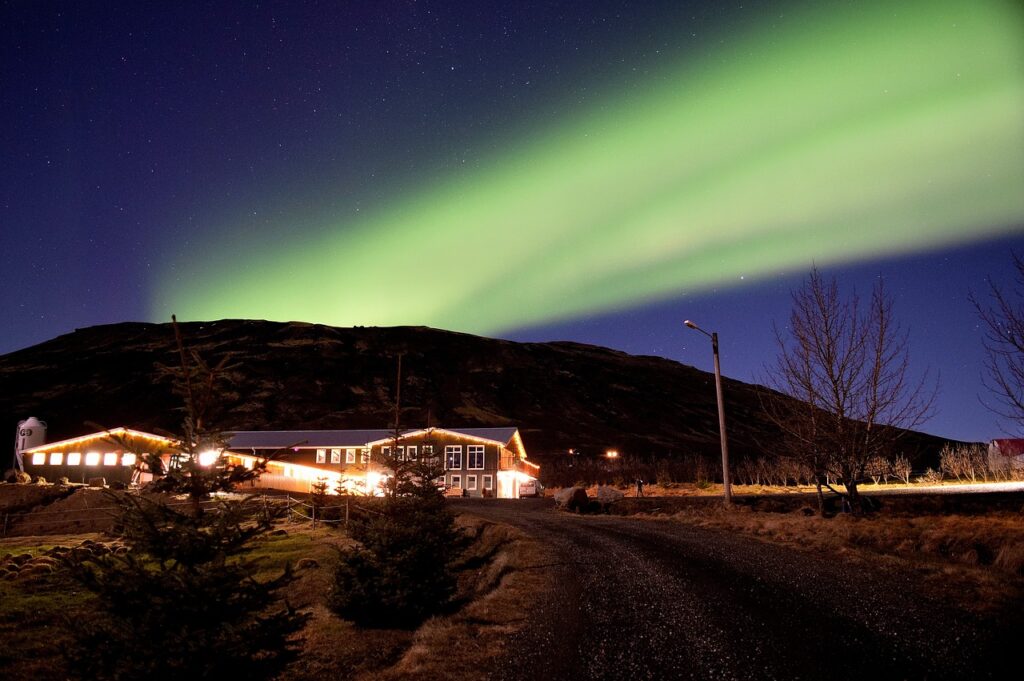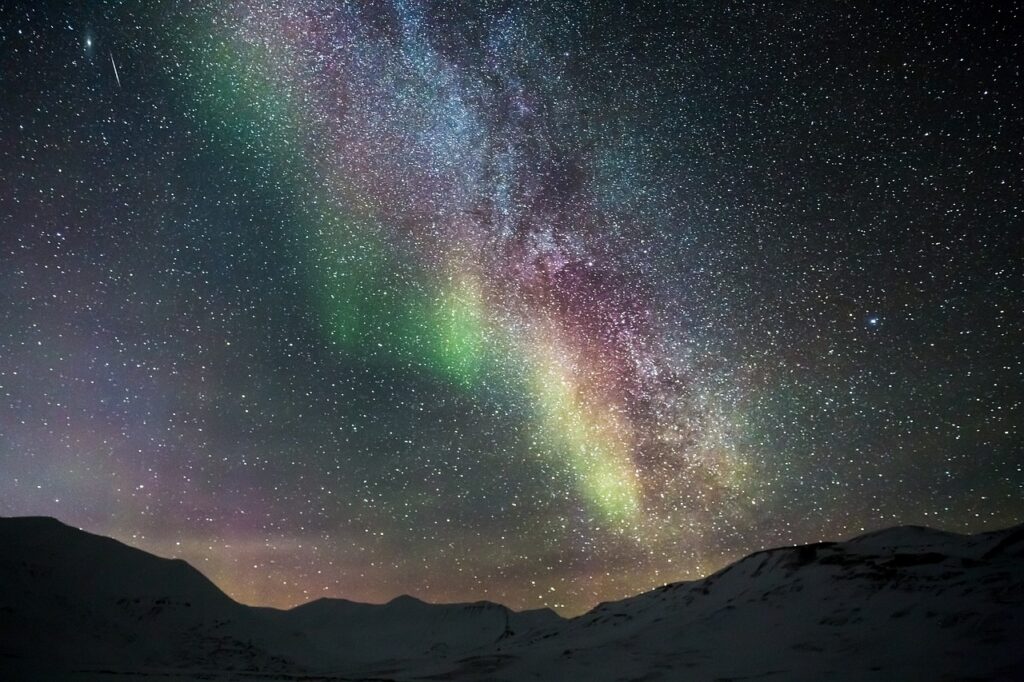The question, “Where are the Northern Lights located?” is a query that frequently emerges in the realm of online searches. Its ubiquity reflects the curiosity of people seeking to unravel the mystery of this dazzling natural phenomenon.
The Northern Lights, also known as the Aurora Borealis, conjure visions of ethereal curtains of light dancing across the night sky. But where exactly can one observe this captivating display? Additionally, what occurs in the far reaches of our atmosphere to bring about this extraordinary spectacle?
In this article, we aim to provide the most comprehensive exploration of the query, ‘Where are the Northern Lights located?’ This multifaceted question invites us to delve into both the terrestrial vantage points where the Northern Lights manifest their celestial dance and the atmospheric realms where their mesmerizing displays come to life.
Where on Earth Can You See the Northern Lights?

The frequency with which the questions, “Where are the Northern Lights?” and “Where are the Northern Lights located?” are posed online, underscores a common desire for clarity on this captivating natural spectacle. In order to begin our exploration, let’s focus on the earthly locations where the Northern Lights can be observed.
The Northern Lights, scientifically known as the Aurora Borealis, are mostly visible in regions close to the Earth’s polar areas. These enigmatic lights are a product of interactions between solar particles and our planet’s magnetic field. As a result, they primarily grace the high-latitude regions near the Arctic Circle in the Northern Hemisphere. This celestial dance of light also finds its counterpart in the Southern Hemisphere, known as the Aurora Australis, where it paints the skies near the Antarctic Circle.
Where are the Northern Lights? Locations Where They Can Be Observed

The key to spotting the Northern Lights lies in proximity to the polar regions. Countries such as Norway, Iceland, Sweden, and Greenland are renowned for offering front-row seats to this celestial performance. The geomagnetic conditions in these areas make them prime Northern Lights viewing locations. Travelers flock to these destinations, especially during the winter months when the extended darkness enhances the chances of witnessing this natural wonder.
As you venture closer to the Arctic Circle, the likelihood of encountering the Northern Lights increases. It’s essential to keep in mind that the Aurora Borealis is a phenomenon that graces the night sky, so darkness is paramount. This is why winter, when the nights are longest, provides optimal conditions for Northern Lights enthusiasts.
Moreover, within these high-latitude regions, specific locations might offer better viewing opportunities due to various factors. In fact, lower light pollution, clear skies, and stable weather conditions greatly enhance the chances of experiencing the Northern Lights. Remote areas away from urban centers often provide the clearest views, allowing the Northern Lights to shine with their full splendor.
Where in the Atmosphere Do the Northern Lights Happen?

The Northern Lights, also known as the Aurora Borealis, occur high up in the sky. More precisely, they happen in a part of the sky called the ionosphere, which is found way above our heads.
Imagine the Earth’s atmosphere like a layered cake. The Northern Lights take place in the topmost layer, which is called the thermosphere. This layer starts about 50 miles (80 kilometers) above the ground and goes up for a long way.
Now, within this thermosphere, there’s a special part known as the ionosphere. The name “ionosphere” comes from the fact that it’s full of charged particles called ions.
Where Are the Northern Lights? Understanding Their Formation in the Atmosphere
Now, let’s dive into the fascinating part: The Northern Lights come into existence when tiny particles from the sun, which we call solar wind, collide with the gases residing in the ionosphere. These collisions between solar particles and the ionosphere’s gases energize the gases, similar to how one might feel enthusiastic or spirited.
However, just like how you eventually return to a calm state after experiencing excitement, the gases in the ionosphere also settle down. When they do, they emit light, and this emitted light is what we perceive as the Northern Lights. The array of colors you witness in the Northern Lights arises from the presence of various gases at that elevated altitude in the sky.
These colorful lights usually happen between 50 to 186 miles (80 to 300 kilometers) above the ground. So, when you’re watching the Northern Lights, you’re basically looking way up in the sky to see this amazing light show.
In simple terms, the Northern Lights take place very high in the sky, in a part of the atmosphere called the ionosphere, where sunlight particles make gases excited and create the beautiful colors we admire in the night sky. It’s like nature’s own fireworks show way above our heads!
Where Are the Northern Lights? Conclusion
In summary, the Northern Lights are located in two distinct realms: on Earth’s surface, primarily near the Arctic Circle, and high in the atmosphere within the ionosphere.
On our planet, they grace places like Kiruna, Svalbard, and Finnish Lapland during the winter’s dark nights. Meanwhile, in the ionosphere, around 50 to 186 miles above us, the Northern Lights come to life as solar particles interact with atmospheric gases, creating the mesmerizing colors that adorn our night skies.
So, whether you’re stargazing from the ground or exploring the heights of our atmosphere, the Northern Lights never cease to dazzle and inspire!
